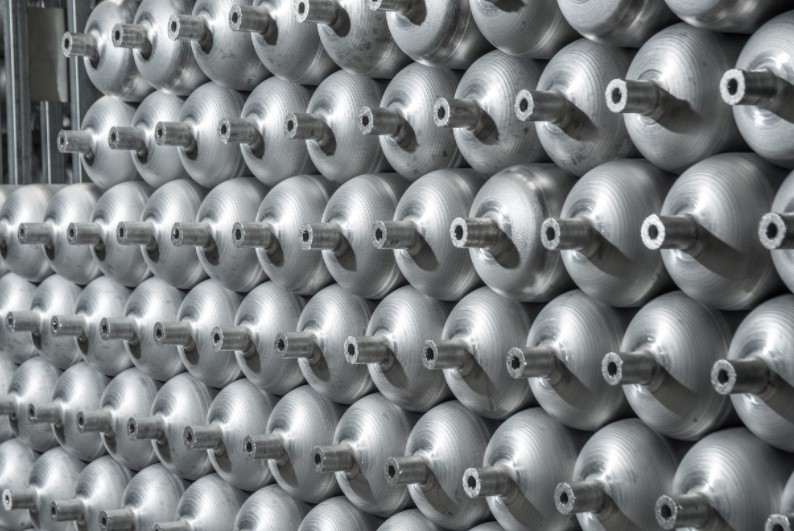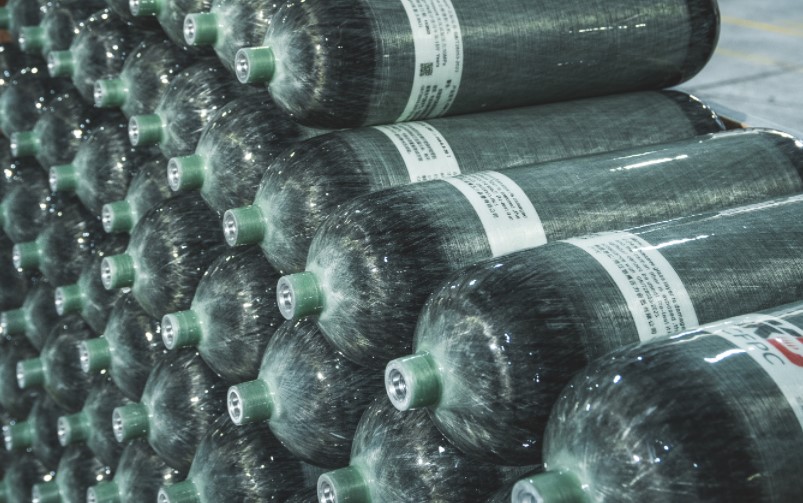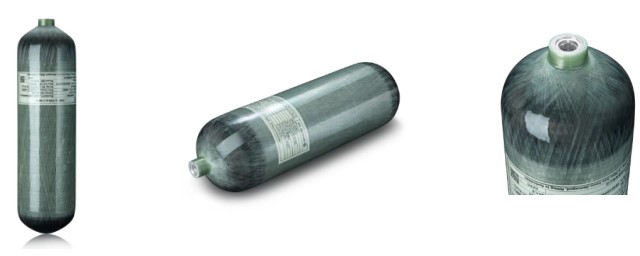For decades, steel cylinders reigned supreme in the realm of gas storage. Their robust nature made them ideal for containing pressurized gases, but they came with a hefty price – weight. This weight became a significant hurdle in situations demanding mobility and portability. However, a new champion has emerged in the form of Carbon Fiber Composite cylinders. These innovative vessels represent a quantum leap in gas storage technology, offering a compelling combination of safety, portability, stability, durability, and reliability. Let’s delve deeper into the heart of a carbon fiber composite cylinder and explore the intricate interplay of materials that make it a game-changer.
Gas Container: The Aluminum Liner
Imagine a lightweight yet incredibly strong container – that’s the essence of the aluminum liner. Nestled at the core of the carbon fiber composite cylinder, this innermost layer serves as the primary gas containment vessel. But why aluminum? The answer lies in its perfect balance of properties. Aluminum boasts exceptional strength, more than enough to hold compressed air securely. However, unlike steel, it achieves this feat without adding excessive weight. This translates to a significant advantage – portability. Firefighters, emergency medical personnel, and even recreational scuba divers all benefit from the ease of carrying and maneuvering carbon fiber composite cylinders due to their lighter weight.
The Strength Beneath the Surface: Carbon Fiber Winding
Encasing the aluminum liner lies the secret weapon of the carbon fiber composite cylinder – carbon fiber winding. This isn’t your average thread; it’s a marvel of material science. Carbon fiber possesses an almost mythical strength-to-weight ratio. Imagine a material that’s incredibly strong yet astonishingly light – that’s carbon fiber. This remarkable property makes it the ideal candidate for reinforcing the cylinder. The carbon fiber winding acts like a spiderweb woven from immense strength, enveloping the aluminum liner and distributing pressure uniformly throughout the cylinder. This ensures the vessel can withstand the demanding high pressures associated with gas storage. But the benefits don’t stop there. The seamless winding technique employed minimizes weak points, creating a structure of exceptional stability. This stability is paramount for reliable performance under pressure and during transportation.
The Guardian Shield: The Outer Layer of Glass Fiber
Think of the outer layer of glass fiber as a knight’s armor, valiantly protecting the inner components of the carbon fiber composite cylinder. This layer acts as a robust shield, safeguarding the cylinder from the harsh realities of its environment. It shields the inner layers from external threats like abrasion, impact, and environmental elements. Imagine a scenario where the cylinder is accidentally dropped or bumped – the glass fiber layer absorbs the impact, preventing damage to the crucial inner layers. Additionally, the glass fiber offers protection from environmental factors like extreme temperatures, UV radiation, and moisture, which can degrade the integrity of the cylinder over time. The synergy between the glass fiber and carbon fiber creates a formidable outer shell, significantly enhancing the cylinder’s overall durability and longevity.
Steel Takes a Backseat: A Performance Comparison
The advantages of carbon fiber composite cylinders extend far beyond their innovative design. Here’s a closer look at how they outperform traditional steel cylinders in key performance areas:
-Safety: Due to their superior strength and structural integrity, carbon fiber composite cylinders offer a significant safety advantage over steel. In the unfortunate event of a rupture, the composite structure of carbon fiber composite cylinders is less likely to fragment into dangerous shrapnel compared to steel.
-Portability: Their lightweight design makes them considerably easier to transport and maneuver, especially crucial in applications requiring mobility. Firefighters can move with greater agility during operations, and emergency medical personnel can administer critical respiratory support with ease.
-Stability: The combination of materials ensures exceptional stability under pressure and external impact. This makes them highly reliable in various operational environments, from the demanding depths of the ocean for scuba divers to the high-pressure demands of industrial applications.
-Durability: The outer layer of glass fiber provides an additional shield against wear and tear, extending the lifespan of the cylinder compared to steel. This translates to a lower cost of ownership in the long run.
-Reliability: The meticulous engineering and stringent quality control processes employed in the production of carbon fiber composite cylinders contribute to their heightened reliability. Manufacturers subject these cylinders to rigorous testing to ensure they meet the highest safety standards.
The Future of Gas Storage
Carbon Fiber Composite Cylinders represent a revolutionary leap forward in gas storage technology. Their combination of lightweight design, exceptional strength, and enhanced durability makes them the preferred choice for a wide range of applications. From the demanding world of firefighting to the adventurous realm of scuba diving, carbon fiber composite cylinders are reshaping how we store and utilize compressed gasses. As technology continues to evolve, we can expect even more advancements in this field, further pushing the boundaries of safety, portability, and efficiency in gas storage solutions.
Post time: Jul-04-2024



